Aerial cork formed in a vehicle cooling system is able to cause a lot of problems. Motor nodes are beginning to overheat, the sensors are incorrectly operating, malfunctions occur in the thermostat, the car's salon is warmed up to the end. It is pretty unpleasant and requires immediate intervention. Therefore, each driver should know how to independently remove the air stop from the car cooling system.
Content
- Cork in the cooling system, causes of cork formation
- How to remove the plug out of the system, the first way, detailed instructions
- How to remove the plug out of the system, the second way, detailed instructions
- Tips of professionals how to prevent the appearance of air traffic jam in the cooling system
Cork in the cooling system, causes of cork formation

The reasons that cause the occurrence of air traffic jam are quite different. We will tell about the most common:
- Too weak tightness in places where the tubes are connected to the nozzles and fittings. During the passage of fluid on the tube, there is a reduced pressure in the inner wall of the tube and the places of contact of the liquid. If there is a defect in the connection site, air is drawn into the system.
- Such a cork may occur during the replacement of the coolant or topping the liquid into the system.
- If an air valve has failed in an expansion tank. If this valve is malfunction, it does not produce excess pressure, and operates on air intake, which is in the future.
- The tightness of the pump is disturbed, which as a result sucks the air outside.
- The occurrence of defects in the outer shell of heating and cooling radiators, which cause the flow.
- Possible defect in the laying of the cylinder block. From under the head, fluid flow is formed, the exhaust pipe produces white pairs, a cooling fluid appears in the oil curtain, and in the expansion tank there is an excessive drilling.
- When deforming the polymer material.
- With mechanical damage resulting from an accident.
How to remove the plug out of the system, the first way, detailed instructions
- To begin, it is necessary to drive a vehicle to the observation pit or a flat surface, then squeeze the handbrake and turn on the neutral transmission.
- Next, we raise the car with the help of a jack for forty centimeters from the surface.
- After that, open the lid of the expansion tank. It is necessary to abide care, since there is a possibility to get burns.
- Now you should run the motor and the heating radiator to the maximum temperature.
- Then begin to gently add cooling fluid to the maximum in the expansion tank.
- Next, increase the rotation of the engine to the mark of 3000 revolutions per minute.
- We are waiting for the discovery of the thermostat and squeeze the lower nozzle with the hand, which leads to the radiator. The procedure must be carried out in a glove, with special caution, observing the necessary safety rules.
- We continue to carry out the operation while the expansion tank does not begin to come out with clean liquid, without air bubbles.
- Now check your hands the bottom of the nozzles - they must be hot.
- After that, launch the heating radiator. See whether hot air flow is served in the vehicle salon.
- We lower the car from the jack and fix it with the help of counter-type stops for safety.
- Then pour the missing amount of coolant, but its level should not reach the top mark, as it is possible to overflow through the cover. Over time, antifreeze particles are capable of corporate vehicle paint material.
- If the enforcement is strong, the procedure can be repeated.
How to remove the plug out of the system, the second way, detailed instructions
- We visit the observation pit or a flat surface, again, squeeze the handbrake and turn on the neutral gear.
- In this case, the motor does not need to be jammed. It must be warm up to a temperature of 90 degrees Celsius, which would open the thermostat and the fluid went to circulate by a large circle.
- The lid of the expansion tank does not open.
- Moom motor.
- Then it is necessary to release the clamp in the throttle node pipe and remove the nozzle. Be extremely attentive and neat, carry out work in rubber gloves, as the temperature is quite high (90 degrees).
- After removing the rubber hose, you need to wait for a while until all the air come out with antifreeze.
- Now it is necessary to dress back the nozzle and hold the clamp.
- At the end stage, we start the engine and test the vehicle. For rechecking the system in full, it is advisable to ride both in a small and high speed.
Tips of professionals how to prevent the appearance of air traffic jam in the cooling system
It is necessary to know that in order to prevent the appearance of air traffic jams in the cooling system, a technical inspection of the vehicle should be and systematically and systematically systematically carried out. Usually, cooling fluid leakage becomes a banal cause of traffic jams, so you need to look at the hood as much as possible and under the bottom of the car in search of characteristic stains.
The poor-quality antifreeze may also cause traffic jams because it cannot be able to cope with the task for a hundred percent, which contributes to the blockages of the channels.
Most specialists recommend to mount additional filters to more efficient filtering. It is recommended to fully replace the component 5,000 mileage kilometers. However, much more practical and cheaper to buy high-quality hladogen, and not diluted powder with water, worth a penny at the car market. With this approach, the car will not go far.
On this we finish this article and sincerely hope that our advice will help many motorists in acquiring experience to eliminate breakage in the cooling system of the vehicle.
Related Materials
- Stove 2110, bad warm stove 2110, VAZ 2110 heating system, repairing the heating system VAZ 2110 with their own hands
- VAZ 2114 stove blows with cold air, stove 2114, bad warm stove VAZ 2114, device and repair of heating VAZ 2114 do-it-yourself, removing the stove VAZ 2114
- How to subdominize the car. How to put a jack. Types of jacks for cars.
- VAZ 2109 Fuse Block, VAZ 2109 Fuse Block Carburetor, VAZ 2109 Fuse Block Injector, Old VAZ 2109 Fuse Block, VAZ 2109 Fuse Block, VAZ Fuse Block 2109
- Car exhaust gas catalyst, faulty catalyst, pluses and cons of the catalyst, how to change the catalyst on the planeencitel
- Stove blowing cold air VAZ 2114, badly blowing the stove VAZ 2114, why badly blowing the stove VAZ 2114
- How to find out the owner of the car by the number of his car, check the car by the number of the traffic police machine, check the car by the state number of the car for free
- How to choose Used tires, Useful Tips
- Winter car road, pressure in passenger car tires in winter, good battery for the car in winter, whether to warm the car in winter
- In winter, the car is poorly started. How to make a car in winter, do you need to warm up the car in winter, useful tips
- Economy fuel consumption machines, the most economical car consumption
- Tires brands for passenger cars, labeling of car tire labeling, residual passenger car tire protector, how to pick a tire on a car brand, car tire tread pattern
- Working transmission operation, mechanical gearbox clutch work, driving with manual gearbox, useful tips
- Rear beam Peugeot 206 sedan, rear beam device Peugeot 206. Rear beam Peugeot 206 Malfunction, repair of the rear beam Peugeot 206
- Diesel fuel in winter, additive for diesel fuel in winter, how to choose the best diesel fuel
- Diesel winter does not start. How to start diesel in winter, heating diesel in winter.
- Japanese bridgestone tires, winter studded bridgestone tires, bridgestone tires brand
- Tire marking decoding for passenger cars, labeling wheels, how to choose the right tires on the disks
- Diesel engine in winter, launch of the diesel engine in winter, what oil to fill in a diesel engine in winter, useful tips
- LED backlight of the car, the backlight of the bottom of the car, the backlight of the legs in the car, the backlight in the door of the car, the backlight of the car is fine
- Recovered tires, bus tire, restored tire protector, can I use them
- Choose winter tires, which is a winter tires, which pressure in winter tires should be marked with winter tires, how to choose the right winter tires, the best winter tires 2019
- Steering rail rail, knock of steering rack, reasons for the knock and repair of the steering rack do it yourself
- Cameless car tires, a set for repair of tubeless tires, repair of the cannon-free tire do it yourself
- Russian tires, Russian tires Winter, Russian All-season tires, Voronezh AMTEL tires, Tires "Matador Omsk Tire", Kama-tires are world-class bus
- How to open a car without a key. Lost the key from the car what to do, the key from the car inside the car
- Silent tires, quiet winter tires, quiet studded bus, which tires to choose, overview tires
- Tires and safety, safety of the bus, why it is necessary to constantly monitor car tires
- Rules of safe driving of the car in the rain and slush, safe driving of the car for beginners
- Rust converter which is better for cars, rust converters to choose how to use rust transducer, professionals
- Polishing the body of the car do it yourself, how to choose a polishing paste, useful tips
- Engine durability, engine life, how to extend engine life
- Knock in the car. Knock when moving the car. What can knock in the car. How to determine the cause of the knock.
- ABS car, what is ABS car, ABS system malfunction, ABS diagnostics
- Overtaking a car when you can start overtaking a car, rules of traffic rules
- Fuel pump VAZ 2110, VAZ 2110 gas station scheme, VAZ 2110 fuel pump device, VAZ 2110 gas station repair,
- Automotive antennas for radio, automotive antenna device, car antenna do it yourself
- Front suspension Kalina, device front suspension Kalina, knock in front suspension Kalina, repair of front suspension Kalina
- Shock absorber Oil, best oil shock absorbers, pumping oil shock absorbers, how to properly pump oil shock absorber
- Clutch malfunctions, touches clutch, causes a clutch malfunction, how to eliminate
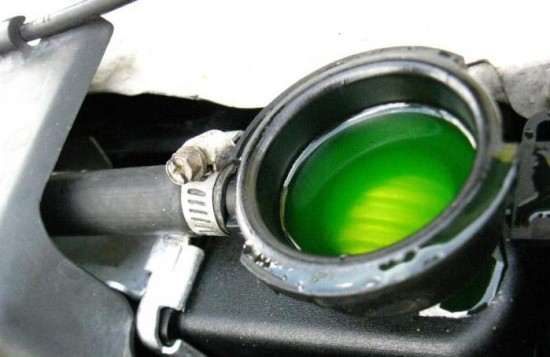
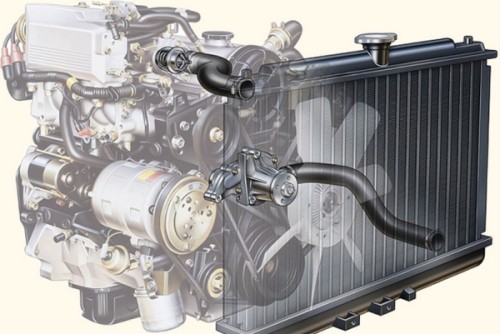
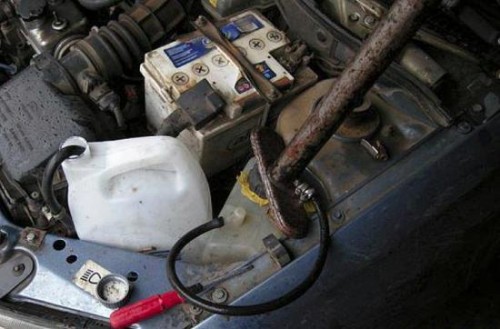
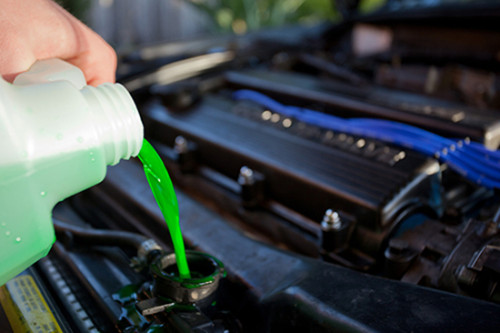
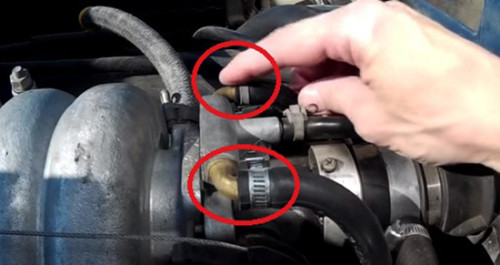






Comments